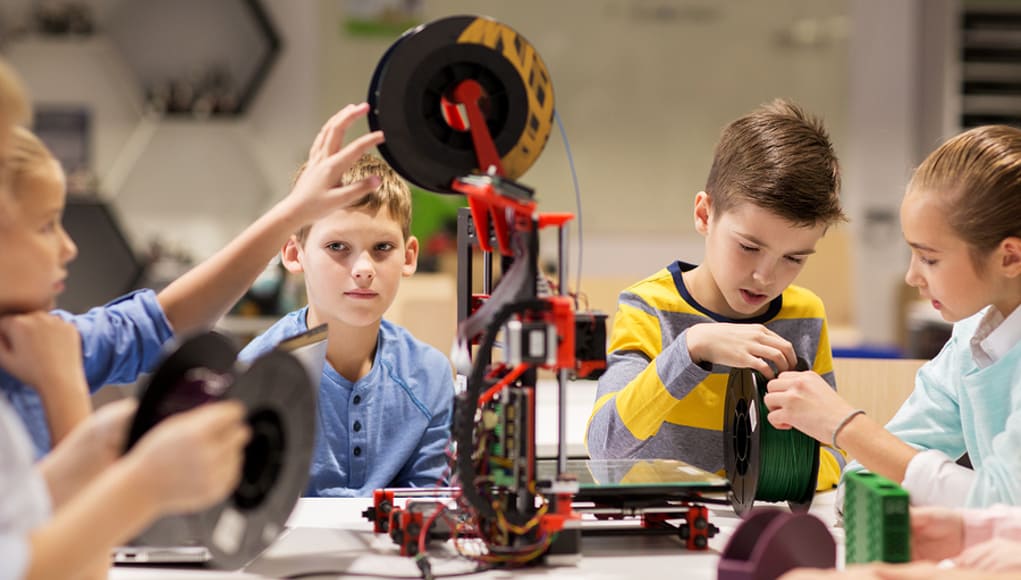3 Ways to Motivate Introverted Learners

By Blake Beus
Motivation is vital to learning, and students who are engaged and motivated have more positive outcomes in the classroom. As classroom learning begins to shift away from traditional lectures to a more social type of learning–collaborative learning, project-based learning and whole-group presentations–introverts are in danger of being left behind.
Since introverts and extroverts prefer to learn in different ways—extroverts tend to make their voice heard, while introverts often prefer reading and listening by themselves—educators should be mindful of the different motivational tools at their disposal.
Here are three strategies to motivate your introverts and help them succeed in a traditional classroom environment.
1. Online Classrooms
Just because introverts tend to shy away from class discussions doesn’t mean they don’t have anything to say. An online supplement to your class is a great way to engage introverted students because they can contribute their thoughts without the feeling that everyone is physically watching them. Online suites like Canvas are excellent tools for this process, offering everything from discussion forums to online activities. If Canvas isn’t possible, free website authoring tools like Weebly can achieve the same effect.
An online supplement to a traditional classroom can offer many benefits to more introverted learners. Not only does it provide introverted students a more comfortable way to contribute their ideas to the whole class, but it also gives teachers the ability to post presentations, documents and other notes for later review, giving introverted learners the freedom to review the relevant content wherever they feel most comfortable.
This is a step toward what Nicki Monahan calls congruent choice, which is to “provide students with the choice to engage in learning in ways that are congruent with their temperament.”
2. Plan Curriculum with Introverts in Mind
This skill of presenting in front of a group is important for all learners, but it doesn’t have to be a constant focus. You still need to teach introverts how to work with people and present things, but teach them how to do it on their own terms. You can do this by planning curriculum that will motivate your introverts and extroverts at the same time.
For example, when planning for group-based presentations, identify specific roles that would attract and motivate introverted students to contribute to the project. Coming up with specific roles for each student–researcher, visual designer, etc.–can help the introverted student find a place they enjoy. It is helpful for introverts to get out of their shell occasionally, which is why in-class presentations are valuable. However, an extra effort from the educator to help coax introverted learners into the spotlight goes a long way.
3. 1-on-1 Conversations
Because introverts keep their head down and work, it’s easy for teachers to assume that everything is going well for them. It turns out that introverts enjoy conversation and often want to speak up, but need time to reflect on what they want to say first.
Once you get the feel for your classroom dynamic, develop a plan to check in with your more introverted students. This could be an in-person meeting before or after class, or it could be an email that lets them know that you’ve acknowledged their hard work. On that note, make sure to check in on the positive things, not just things in need of improvement.
It’s a common misconception that introverted learners are antisocial and would prefer to be left alone. The truth is that introverts, whether in an office setting or a classroom, are just as social as anyone else. They just require the right environment in which to feel comfortable. Just as learning strategists must tailor employee onboarding to align with the learning needs of their workforce, a similar method should be followed in the classroom. As an educator, it’s important to continually strive to create an environment that caters to all kinds of learners, workers and thinkers.
For more, see:
- Top Higher Education Learning Trends to Look For in 2017
- Instructional Design: Inspire Students and Empower Teachers
- How Smartphones Can Make Smart Students
Blake Beus is the Director of Learning Solutions at Allen Communication Learning Services. Follow him on Twitter: @BlakeBeus
Stay in-the-know with all things EdTech and innovations in learning by signing up to receive the weekly Smart Update.




0 Comments
Leave a Comment
Your email address will not be published. All fields are required.